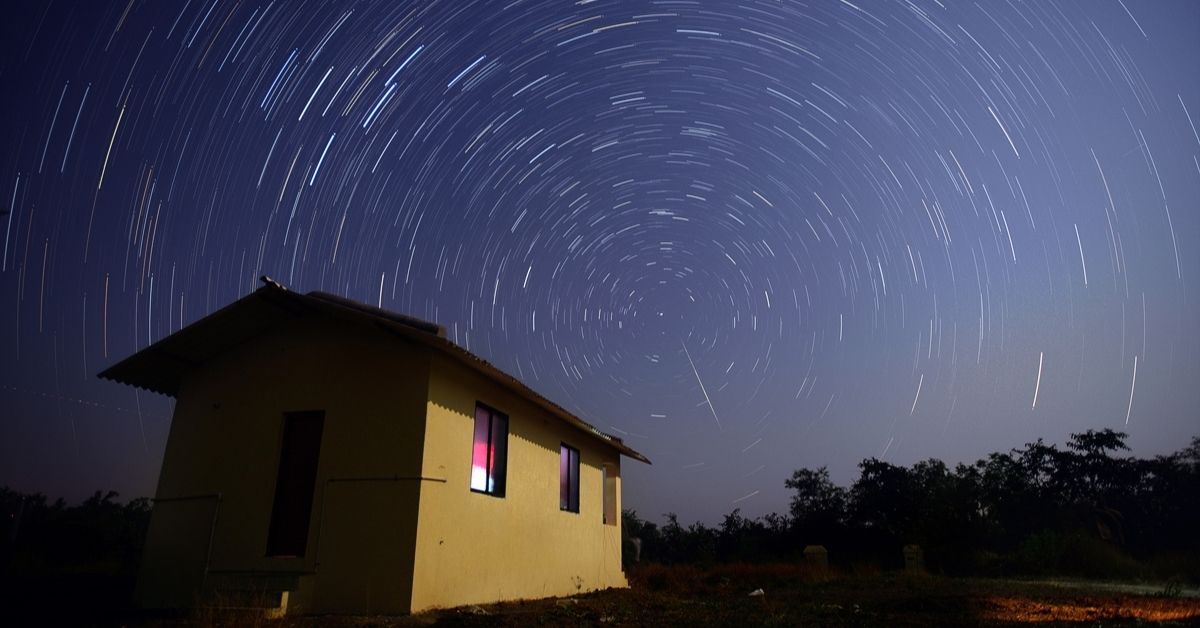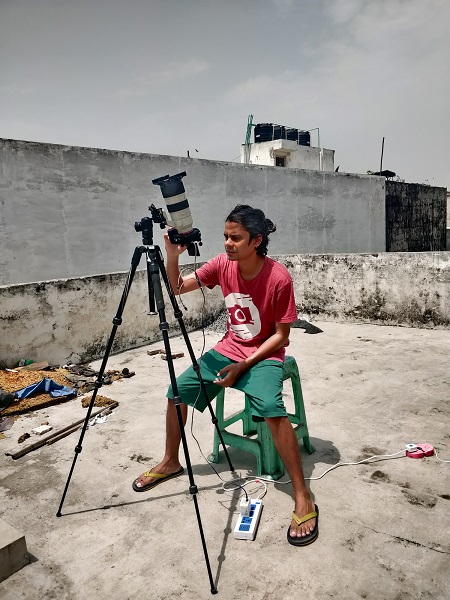NEOWISE to the Solar Eclipse, How Astrophotographers Take Pictures of The Sky
The ‘eclipse chasers' weren't browbeaten by the COVID-19 lockdown. Here's how they planned it all in advance.

Astrophotography involves shooting celestial objects and events by taking sharp, detailed, close-up images of the planets in our solar system, and distant galaxies like Andromeda which are closest to our galaxy. The most important aspect is to know how and where to shoot from. A good camera with a good lens can also get satisfactory results. Of course, one needs a telescope to look at the planets and stars properly.
Astrophotographers work mostly during the nights, away from dazzling city lights, from lonely spots, sometimes travelling across continents, to get a perfect shot.
When I spoke to them, their excitement on looking at celestial objects through their camera lens rubbed off on me, and I looked at the night sky with awe.

“Photographing planets is not as exciting as hunting in the deeper sky. Through the naked eye, the sky may be just full of twinkling stars. But when you look at it through the high-resolution lens of a camera, it’s a different story,” says Pune-based Kedar Bhat.
Along with astrophotography, he specialises in wildlife and nature photography, as well as website designing. He also conducts photography classes.
He adds, “I still cherish the moment I photographed Comet Hyakutake with its long tail, back in 1996. It was exhilarating and got me hooked to astrophotography.”
Comet Hyakutake with its long-period orbit, passes the Earth once in about 17,000-70,000 years. The accidental discovery of the comet by Yuji Hyakutake, an amateur astronomer from south Japan, was an exciting development for astronomers everywhere.
But the common man had no clue.
Besides shooting celestial objects, many astrophotographers are members of TWAN (The World At Night) style of shooting. It is an international group of photographers who shoot stunning nightscapes of celestial objects against famous monuments. So if you see images of the lunar eclipse behind the Taj Mahal, the Milky Way behind the Himalayas, the Super Moon on the horizon etc., you should know that they are by the TWAN group.
Delhi-based astrophotographer Nimit Nigam is very proud of his three-month project of tracking the Moon. “The Moon has a cycle of 28 days, but it took me three months to get every phase in a perfect shot. Some days, the weather and the pollution in Delhi doesn’t get you the perfect image. So I had to wait until the next month to capture that phase.”
Each night, for three months, Nimit was perched on his rooftop to map the Moon. An alumnus of Fine Arts from Jamia Millia Islamia University in Delhi, his photographs have been published in National Geographic Traveller Romania, Etihad Airways, and Lonely Planet India.

In the last few years, especially since Instagram became popular, our smartphone screens pop up with images of the night sky, the moon, or even eclipses. Smartphones are beneficial in capturing these views, which are a novelty for city dwellers living with dazzling street lights and illuminated hoardings, as they rarely see the brilliance of the night sky. But that’s not astrophotography.
“It is not the camera but the photographer that gives the result. Just like it’s not colours that create a painting, but the artist who uses the colours to create the painting, astrophotography is also an art,” explains India’s well-known astrophotographer Nilesh Vayada.
A chartered accountant-turned-astrophotographer based in Mumbai, he is better known as the ‘eclipse chaser’! He chases solar eclipses across the continents with his astrophotography partner from Gurugram, Ajay Talwar.
“Ajay and I have often gone to the Hanle Observatory in Leh, Ladakh, for astrophotography. Some of our pictures from there were published on NASA’s APOD (Astronomy Picture Of the Day) website. It is a proud moment for any astrophotographer,” says Nilesh.

The annual solar eclipse on June 21 followed the penumbral lunar eclipse on July 5 was an exciting time for astrophotographers who were lucky to be on the visible path when the Moon or the Earth was blocking the Sun’s view from the Earth. Indian astrophotographers couldn’t witness the lunar eclipse as it was daytime during the eclipse, but those living in Suratgarh (Rajasthan), Sirsa and Kurukshetra (Haryana), Dehradun, Chamoli and Joshimath (Uttarakhand), enjoyed the annular solar eclipse.
“The coronavirus-lockdown was a major hurdle for us as travelling was restricted,” says Ajay Talwar.
As a member of TWAN, Ajay has been photographing the sky with Nilesh for more than 20 years. The National Geographic also published several pictures of the Milky Way Galaxy over the Himalayan night sky captured by Ajay.
But the eclipse chasers weren’t browbeaten by the lockdown. They had planned to photograph these eclipses in advance. With a slight change in the location from Suratgarh to Sirsa, they not only ‘captured’ this annular solar eclipse but also helped astronomers around the world see them by live-streaming the events.
For Ajay, intra-state travel to Sirsa from Gurugram wasn’t a problem. With due permissions, Nilesh flew from Mumbai to Delhi, and by road to Sirsa.
Ajay recounted that though his family of four and Nilesh could easily be accommodated in one van, they needed three separate vans to transport the equipment needed to record, shoot and live stream the eclipse.
Chasing a solar eclipse is a family trip for Ajay, and while pursuing such celestial phenomena, his family has travelled to remote places that a regular tourist might not think of.
That’s another advantage for sky ‘shooters’. They visit remote places in the Himalayas or interior deserts which are still unpolluted. Spiti Valley in Himachal Pradesh is a popular site. But it’s difficult to get there with all the equipment to capture the deep sky in its best glory.

Almost every astrophotographer conducts workshops by taking enthusiasts to these remote places. Clear skies are the best times to learn to shoot, while having a great vacation. Although it seems appealing, aspiring astrophotographers need to invest heavily in terms of equipment, time and resources.
They would need to attend workshops to study the Earth’s movements, and learn to direct the camera by placing it at the exact latitude and longitude. Lastly, there is not much income, because either one needs to have an alternate job, or be willing to shoot weddings, coffee table books or pursue other kinds of photography. Without an alternate means of income, it would be difficult for an aspirant to survive on astrophotography alone.
Moreover, with low visibility and narrow periods, like with the NEOWISE Comet, capturing these once-in-a-lifetime events remains challenging.
It’s a passion, “ek junoon”, admits every astrophotographer I spoke to. They tell me that there is rarely any income from this branch of photography but the adrenal rush they get when they look at what their camera has captured, which the naked eye couldn’t see, is worth every effort, and keeps them going.
(Edited by Shruti Singhal)
If you found our stories insightful, informative, or even just enjoyable, we invite you to consider making a voluntary payment to support the work we do at The Better India. Your contribution helps us continue producing quality content that educates, inspires, and drives positive change.
Choose one of the payment options below for your contribution-
By paying for the stories you value, you directly contribute to sustaining our efforts focused on making a difference in the world. Together, let’s ensure that impactful stories continue to be told and shared, enriching lives and communities alike.
Thank you for your support. Here are some frequently asked questions you might find helpful to know why you are contributing?


This story made me
-
97
-
121
-
89
-
167











